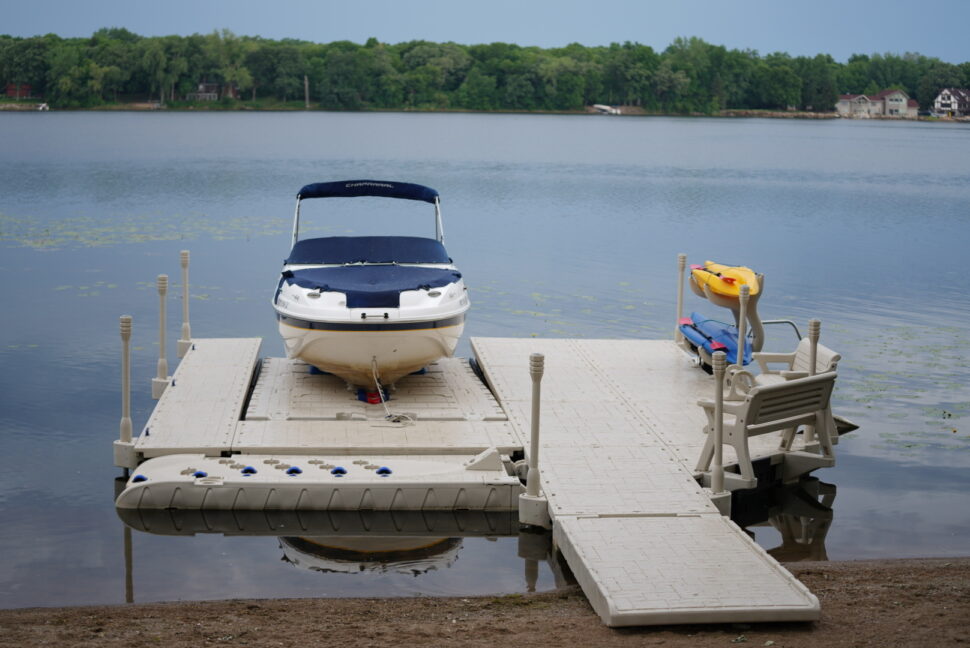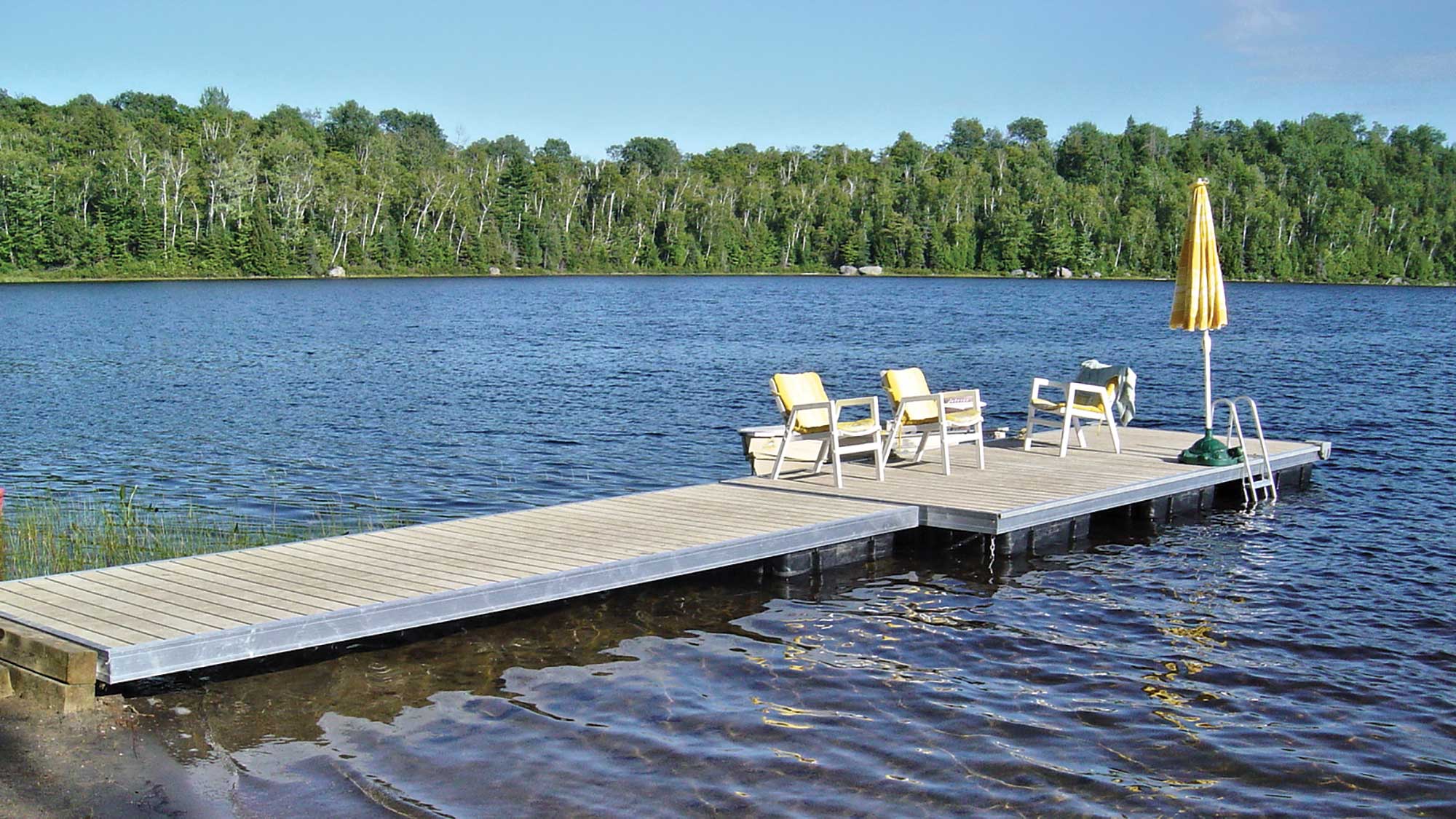Find the Perfect Floating Dock Builder to Bring Your Waterfront Vision to Life
Produce the Perfect Docking Solution With Floating Docks
Floating docks existing a functional option for a selection of maritime needs, adjusting seamlessly to fluctuating water levels and varied vessel kinds. Their modular nature permits quick installment and moving, yet the choice of suitable materials and style features is vital for making certain both capability and visual charm. As we explore the important elements that contribute to the performance of floating docks, several key variables pertaining to security and maintenance will certainly arise, questioning concerning just how to optimize your docking experience. The succeeding discussion will illuminate these important considerations.

Benefits of Floating Docks
Floating docks deal numerous advantages that make them a suitable selection for various maritime applications. One of the primary advantages is their adaptability to changing water degrees. Unlike fixed docks, floating docks rise and fall with the tide, making sure consistent accessibility for vessels. This attribute is specifically essential in areas prone to significant tidal fluctuations or seasonal water level changes.
In addition, floating docks are typically less complicated and quicker to set up compared to standard set frameworks. Their modular layout permits straightforward assembly and disassembly, assisting in maintenance and moving when necessary. This adaptability is particularly useful for short-term applications or in environments where problems may transform.
Floating docks also often tend to be a lot more eco-friendly, as they decrease interruption to the seabed and surrounding marine communities. Their buoyant nature reduces the threat of damage to aquatic life, advertising a healthier atmosphere. In addition, these docks can be tailored to fit different vessel dimensions, guaranteeing that they satisfy certain operational requirements - floating dock builder.
Ultimately, the mix of adaptability, simplicity of installment, and environmental considerations makes floating docks a highly efficient solution for a vast array of maritime demands.
Picking the Right Materials
Choosing the proper products for floating docks is essential to guarantee durability, longevity, and stability. The selection of products directly impacts the dock's performance in different ecological problems, consisting of direct exposure to water, sunshine, and prospective wear from marine web traffic.
Common materials utilized for floating docks include light weight aluminum, wood, and high-density polyethylene (HDPE) Aluminum is lightweight, corrosion-resistant, and requires marginal upkeep, making it an excellent selection for long life. Nevertheless, its preliminary expense can be higher contrasted to various other materials.
Timber, while cosmetically enticing and giving a traditional appearance, can be prone to rot and bug damage if not correctly treated. Therefore, making use of pressure-treated timber or naturally durable varieties like cedar or redwood can alleviate these issues.
HDPE is a preferred option due to its resistance to UV rays and chemicals, along with being eco-friendly. floating docks. It is light-weight and readily available in different colors, allowing for customization
Eventually, the ideal material selection will rely on particular needs, including spending plan, desired visual appeals, and environmental factors to consider. Cautious evaluation of these aspects will certainly result in a effective and resilient floating dock option.
Layout Considerations for Stability
When developing floating docks, ensuring stability is an essential facet that can considerably impact their capability and safety. Stability in floating dock style is affected by various variables, including buoyancy, weight circulation, and the arrangement of parts.
Weight distribution is important; equally dispersing lots throughout the dock prevents tilting and enhances security. This can be achieved via strategic positioning of docking tools, such as fenders and cleats, as well as proper spacing of floats. Additionally, the measurements of the dock need to be attentively intended. Bigger layouts can offer increased stability, particularly in rough water conditions, while longer docks might call for extra assistances to stop sagging.
An additional crucial consideration is the environmental influence, consisting of wave action and wind. Integrating functions such as sidewalls or skirting can help reduce the impacts of environmental pressures, keeping stability in damaging conditions. Ultimately, a combination of thoughtful layout, material option, and understanding of ecological factors will certainly yield a drifting dock that meets both stability and safety and security demands.
Installation Tips and Methods

Following, secure the necessary permits and comply with local regulations, which might determine setup techniques and environmental considerations. Engage a certified service provider experienced in floating dock setups if needed. Usage premium materials made for aquatic environments to enhance sturdiness and longevity.
When placing the dock, straighten it alongside the shoreline to promote simple gain access to. Guarantee that the anchoring system is durable, utilizing concrete blocks or helical anchors to support the dock against wind and wave activity. It's critical to represent seasonal water level variations, including potential ice activity in colder environments.
During the installment, verify the dock's floatation and stability prior to completing the anchoring. Frequently inspect the installment for any type of indicators of wear or damages. By following these pointers and techniques, you can achieve a safe, functional, and cosmetically pleasing floating dock installation that satisfies your needs.
Maintenance and Treatment Standards
Maintaining and caring for floating docks is vital to prolonging their life expectancy and guaranteeing risk-free usage. Routine examinations ought to be conducted to like it determine any indicators of wear, damages, or marine development. Seek fractures, loosened fittings, or blemished locations on the dock's surface, as these issues can compromise structural stability.
Cleaning up is crucial. Make use of a stress washing machine to get rid of algae, barnacles, and particles, which can accumulate over time. For stubborn development, consider environmentally friendly cleaner that will not damage aquatic life.
Furthermore, inspect the mooring lines and anchors often to ensure they are protected and totally free from rust. why not find out more Replace any kind of torn or damaged lines immediately to maintain security.
Throughout severe weather, such as storms or freezing conditions, take precautionary procedures. Secure the dock with extra mooring lines and, if practical, get rid of any type of detachable components to avoid damages.
Verdict
In conclusion, the implementation of floating docks provides a versatile and efficient docking option ideal for various maritime applications. With proper setup and routine upkeep, floating docks can give reliable and effective docking experiences for a vast range of vessels.
As we check out the vital elements that contribute to the efficiency of floating docks, a number of vital variables concerning stability and maintenance will certainly arise, Our site raising concerns concerning how to optimize your docking experience. Unlike taken care of docks, floating docks rise and autumn with the tide, making sure constant accessibility for vessels.When making floating docks, ensuring stability is a fundamental element that can considerably affect their capability and safety. Stability in floating dock design is influenced by various variables, consisting of buoyancy, weight distribution, and the arrangement of elements. Inevitably, a combination of thoughtful style, material option, and understanding of environmental elements will yield a drifting dock that satisfies both security and security demands.